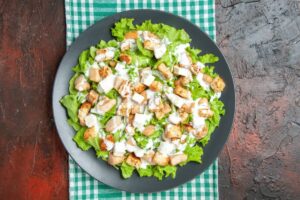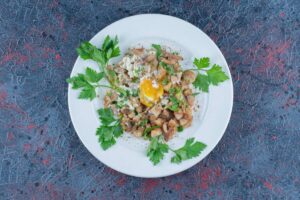The Food & Recipes Blog
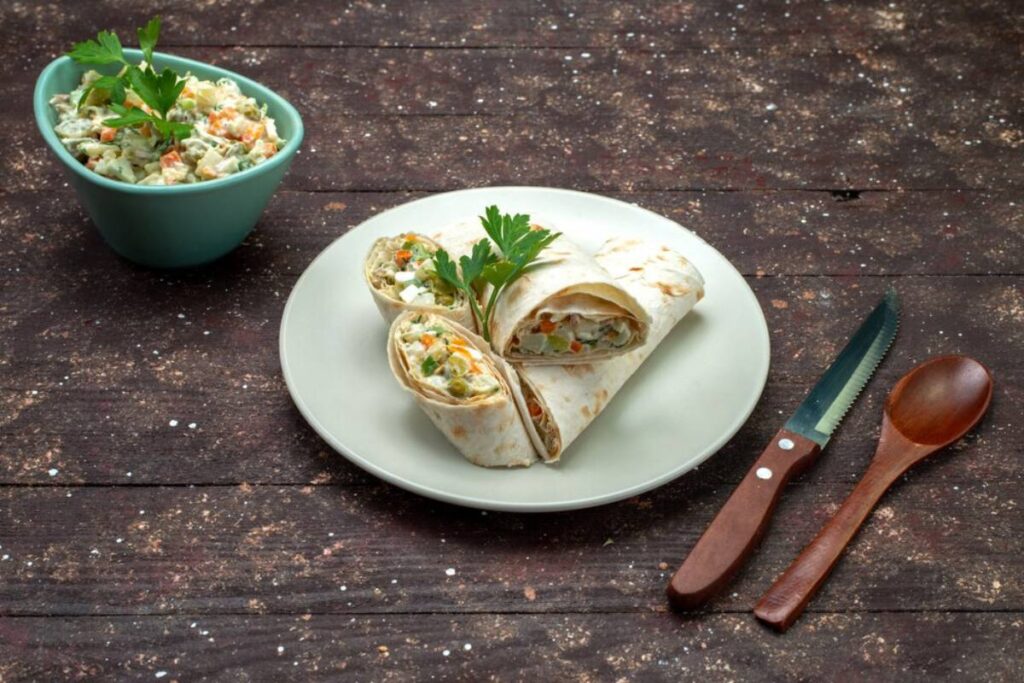
Hummus Veggie Wraps for Dinner
The best dinners, more often than not, are the ones that don’t announce themselves. No elaborate prep. No lengthy simmering. Just a handful of well-chosen ingredients, brought together with care, and enough texture and contrast to keep the plate (or in this case, wrap) interesting. These hummus veggie wraps fall squarely into that category.
They’re not reinventing anything. In fact, they lean entirely into the familiar—a soft flatbread, a generous layer of hummus, crisp raw vegetables, maybe a bit of pickled tang, and the sort of finish that rewards restraint. As a Mediterranean wrap, this is less about novelty and more about trust in the ingredients themselves. When the components are good, they don’t need dressing up.
Hummus: Foundation, Flavour, and Function
Good hummus carries more than just flavour. It offers body. A layer of creaminess that both binds and balances, holding crunchy vegetables in place while adding fat, protein, and unmistakable savoury warmth. When used as a base in wraps, it replaces the need for cheese, mayo, or sauces—though, of course, none are off-limits if the mood calls.
In this recipe, hummus becomes the quiet anchor. Not the star, necessarily, but the unspoken structure around which the other elements fall into place.
Vegetables That Bring Contrast
The success of this wrap depends almost entirely on the contrast between crunch and cream, acidity and richness, and cool and warm. Choose your vegetables accordingly.
- Cucumber and carrot offer crispness
- Red pepper gives both sweetness and snap
- Lettuce or spinach adds softness and structure
- Pickled onion or gherkin introduces acid and bite
- Avocado (if using) brings silkiness to balance it all
The ideal mix doesn’t overwhelm; it complements. The wrap should feel varied with every bite, not overloaded.
Ingredients (Serves 2)
Base:
- 2 large wraps or flatbreads (lavash, wholemeal, or gluten-free if needed)
- 4 heaped tablespoons of hummus (classic or flavoured)
Vegetables:
- ½ red pepper, thinly sliced
- ½ cucumber, cut into matchsticks
- 1 medium carrot, peeled and shredded
- A handful of lettuce leaves or baby spinach
- ½ small red onion, very thinly sliced (optional: soak in lemon juice or vinegar for 10 mins)
- A few slices of avocado (optional)
Extras (optional but recommended):
- Pickled vegetables or gherkins
- A drizzle of olive oil or tahini
- A sprinkle of za’atar or sumac
- Fresh parsley or mint leaves
- A squeeze of lemon juice
Method
1. Prepare the vegetables: Cut, shred, and layer your vegetables in advance. This wrap comes together quickly once assembly begins, so having everything laid out—mise en place-style—makes the process feel fluid rather than frantic.
2. Warm the wrap (if desired): While not strictly necessary, a lightly warmed wrap is more pliable and often more satisfying. Pop it into a dry pan for 20–30 seconds per side, or microwave it briefly wrapped in a tea towel.
3. Layer thoughtfully Spread: 2 tablespoons of hummus across each wrap, leaving a margin at the edges for easier folding. Begin layering your vegetables—start with lettuce or greens, then arrange carrot, pepper, cucumber, and anything else you’re using. Add pickled items and avocado last, along with herbs and seasoning.
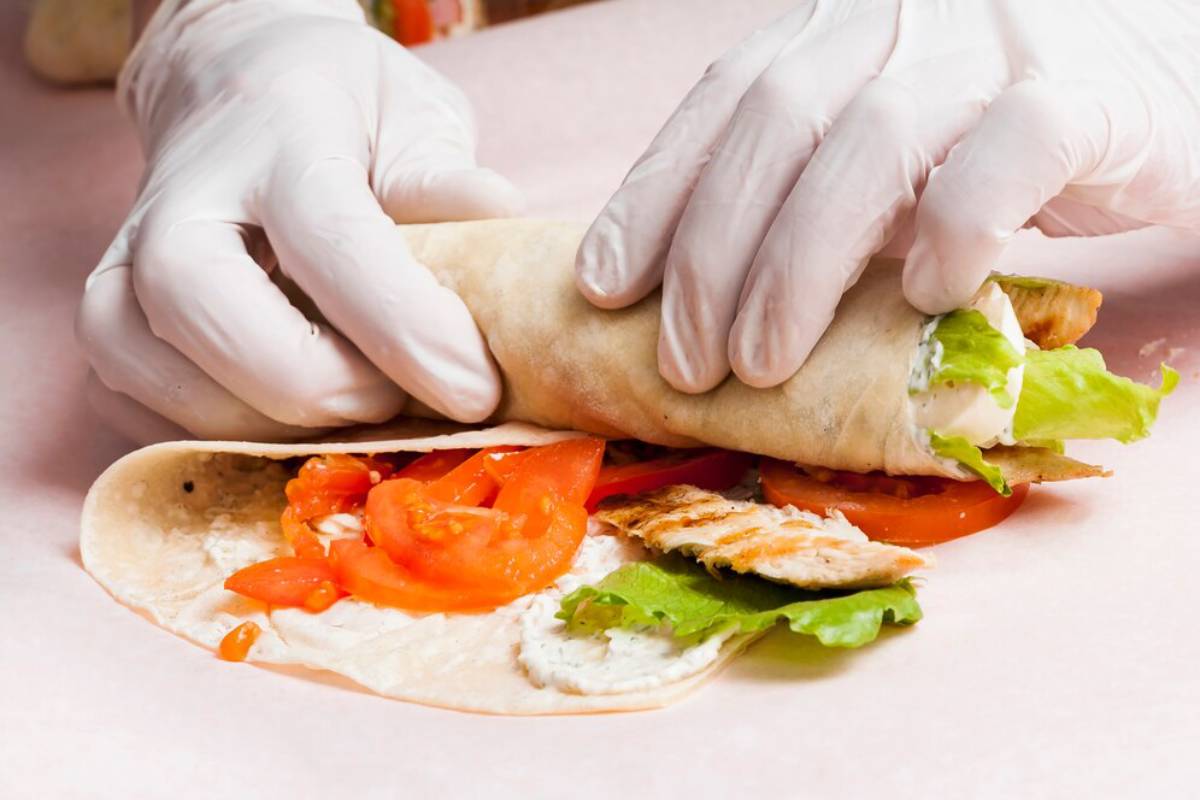
4. Wrap and serve: Fold in the sides, then roll tightly from the bottom. If it feels too full, remove a bit—a neat wrap is better than a generous mess. Slice in half if serving on a plate, or wrap in parchment for eating on the go.
What Makes This Wrap Work
It’s less about what’s in it and more about how everything plays together:
- Hummus provides depth and cohesion
- Vegetable supply crunch and freshness
- Pickles or herbs bring contrast and lift
- The wrap acts as a soft frame—pliable, portable, quietly satisfying
This isn’t a salad trapped in a tortilla. It’s a balanced assembly, more composed than casual, but no less easy to eat.
Small Choices That Make a Big Difference
- Use a sharp knife: Neatly cut vegetables improve both texture and visual appeal. Scruffy edges and uneven slices affect how well the wrap folds and how satisfying it feels in the hand.
- Season as you go: Don’t rely solely on hummus to carry flavour. A pinch of salt, a crack of pepper, or a light dusting of za’atar can take things from fine to thoughtful.
- Soften the onion: If raw onion feels too aggressive, soak it in lemon juice for a few minutes. The acidity mellows the bite and adds complexity.
- Know when to stop: More is not always better. Overfilling may look generous, but it leads to awkward wrapping and uneven bites. Focus on balance, not volume.
Variations to Suit Your Mood
Protein-packed
Add hard-boiled eggs, roasted chickpeas, or grilled halloumi for additional substance. Leftover falafel also works brilliantly.
Spicy
Incorporate sliced chilli, a drizzle of hot sauce, or harissa blended into the hummus.
Herby and bright
Use mint, parsley, or coriander liberally. Add a dash of lemon zest or pomegranate molasses for an unexpected top note.
Roasted option
Replace raw vegetables with roasted courgette, aubergine, and sweet potato for a more autumnal, mellow version.
Nutritional Snapshot (Per Wrap – Approximate)
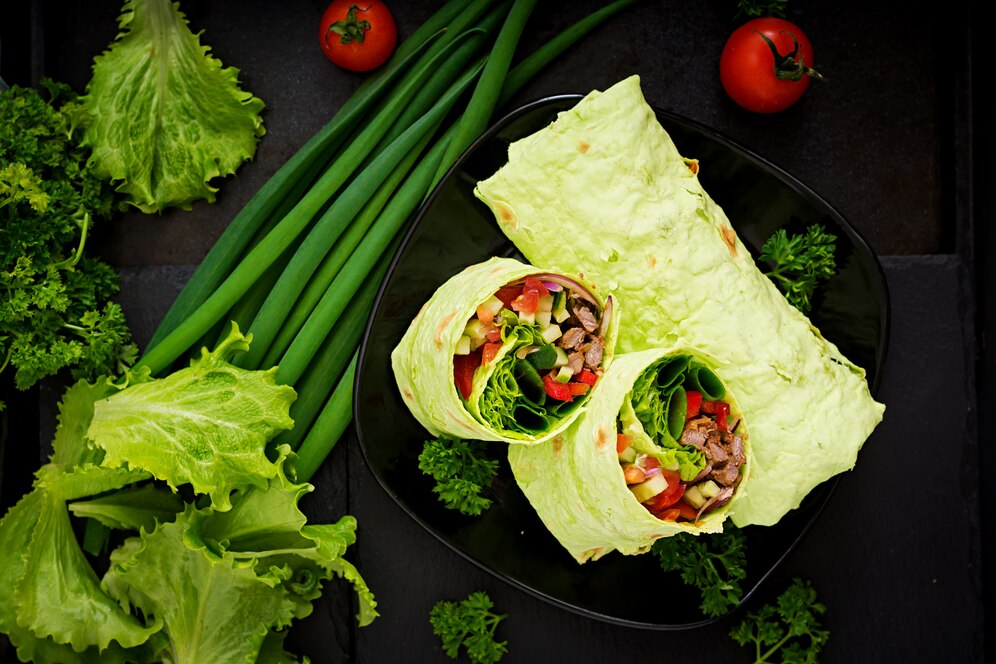
- Calories: 370
- Protein: 11g
- Carbohydrates: 34g
- Fat: 20g
- Fibre: 7g
This fast vegetarian meal offers protein from chickpeas, fat from olive oil and tahini, and fibre from vegetables and wholemeal wraps. It’s plant-based, satiating, and perfectly suited to weeknights when effort is in short supply but expectations remain high.
Who This Meal Is For
This is dinner for the quietly ambitious: the ones who want something satisfying without complication, who reach for balance over excess. It’s for those who value freshness, but don’t necessarily want to cook. Those who see vegetables not as a duty but as a choice.
It suits solo diners as easily as it does households—adaptable, scalable, forgiving. And best of all, it requires almost no cleanup.
Final Thoughts: A Wrap That Respects Its Ingredients
These Mediterranean wraps aren’t reinventing the wheel. They’re just doing something simple very well. They highlight what’s fresh, let hummus act as more than a garnish, and wrap everything in something warm and yielding.
It’s fast food, in the most literal sense. But it’s also thoughtful. And in a weeknight dinner landscape filled with shortcuts and compromises, that distinction is meaningful.



